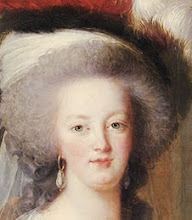With horror films as popular as ever, it comes as no surprise that there are an endless amount of books about horror movies published in the last few decades, from movie guides to behind-the-scenes memoirs and everything in between. I've complied a selection of some interesting horror movie books, categorized by subject. Happy reading!
Essentials, Must-Sees, and Watch-Before-You-Die
Horror 101: The A-List of Horror Films and Monster Movies by Aaron Christensen
Essential Horror Movies: Matinee Monsters to Cult Classics by Michael Mallory
101 Horror Movies You Must See Before You Die by Steven Jay Schneider
The Horror Show Guide: The Ultimate Frightfest of Movies by Michael Mayo
Horror by Decade or Genre
The Slasher Movie Book by J. A. Kerswell
Universal Studios Monsters: A Legacy of Horror by Michael Mallory
Monster Mash: The Creepy, Kooky Monster Craze In America by Mark Voger
Sixties Shockers: A critical Filmography of Horror Cinema, 1960-1969 by Mark Clark
J-Horror: The Definitive Guide to The Ring, The Grudge and Beyond by David Kalat
Ten Years of Terror: British Horror Films of the Seventies by Harvey Fenton and David FlintThe Hammer Story by Marcus Hearn and Alan Barnes
The Very Witching Time of Night: Dark Alleys of Classic Horror Cinema by Gregory William Mank
It Lives Again! Horror Movies in the New Millennium by Axelle Carolyn
The Making Of...
Crystal Lake Memories: The Complete History of Friday The 13th by Peter M. Bracke
Chain Saw Confidential: How We Made the World's Most Notorious Horror Movie by Gunnar Hansen
Crimson Peak: The Art of Darkness by Mark Salisbury
The Making of George A. Romero's Day of the Dead by Lee Karr
Jaws: Memories from Martha's Vinyard by Matt Taylor
Amicus Horrors: Tales from the Filmmaker's Crypt by Brian McFadden
Bits and PiecesDanse Macabre by Stephen King
Monsters in the Movie by John Landis
Writing the Horror Movie by Marc Blake and Sara Bailey
The Horror of It All: One Moviegoer's Love Affair with Masked Maniacs, Frightened Virgins, and the Living Dead by Adam Rockoff
Hollywood Monster: A Walk Down Elm Street with the Man of Your Dreams by Robert Englund
The Monster Show: A Cultural History of Horror by David J. Skal
Monster Mash: The Creepy, Kooky Monster Craze In America by David J. Skal
Wes Craven: The Man and his Nightmares by John Wooley
Too Much Horror Business by Kirk Hammett

















